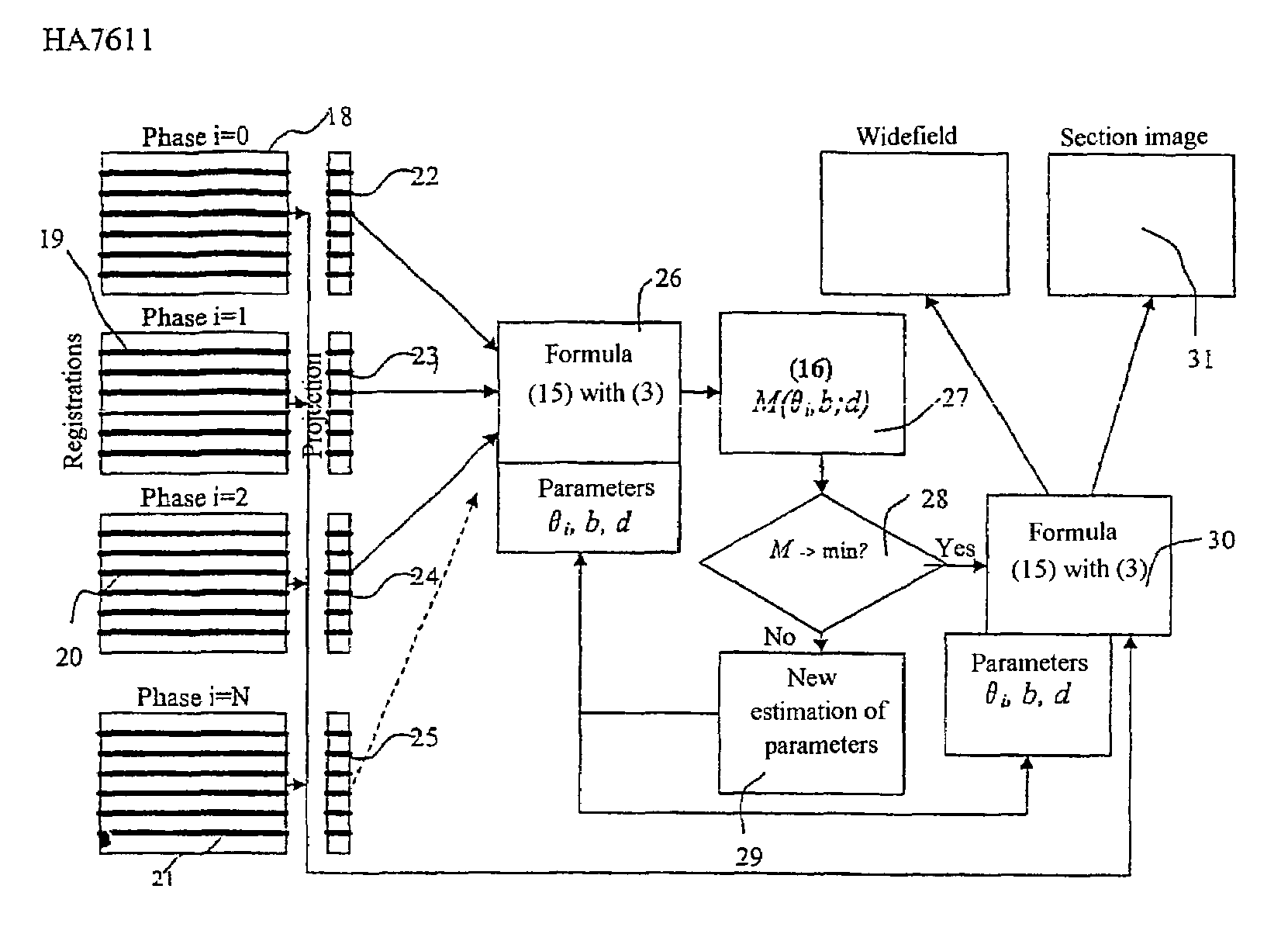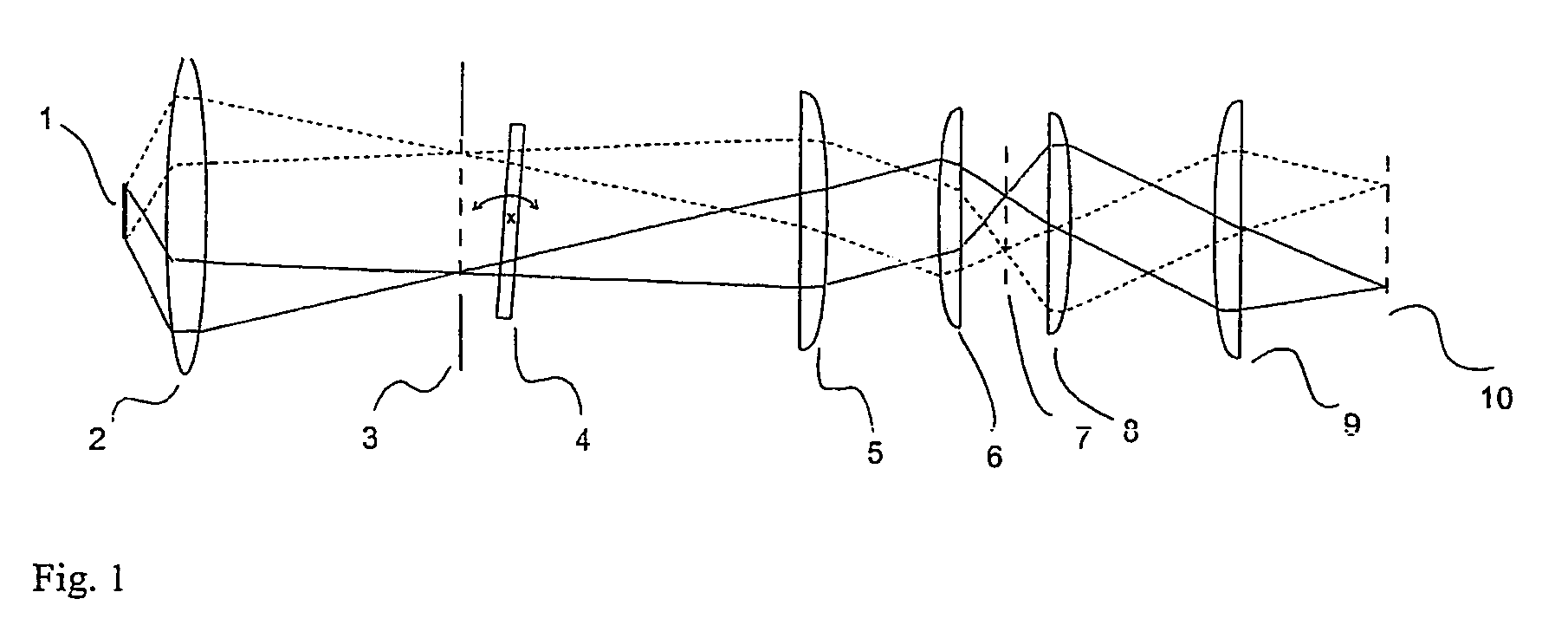Method for improving depth discrimination in optical reproduction systems
a technology of optical reproduction and depth discrimination, applied in the direction of projectors, instruments, material analysis, etc., can solve the problems of inability to maintain the necessary constancy of individual phase displacement steps in practice, the physical boundary conditions required for the application of the indicated method are very difficult to achieve in practice, and the stripe artifacts in the generated section images cannot be realized. , to achieve the effect of improving the depth discrimination of optical imaging systems
- Summary
- Abstract
- Description
- Claims
- Application Information
AI Technical Summary
Benefits of technology
Problems solved by technology
Method used
Image
Examples
Embodiment Construction
[0021]FIG. 1 is a simplified optical schematic illustrating the structured illumination with transmitted illumination by way of example. The imaging beam path (image-forming beam path) is shown. A one-dimensional periodic structure (transmission grating) (3) which is located in a conjugated object plane of the optical arrangement shown in the drawing is illuminated by a light source (1) through collector optics (2). The grating is followed in light direction by a plane-parallel glass plate (4). The angle of the plane-parallel plate relative to the optical axis can be adjusted in a defined manner. The structure is imaged in the specimen plane (7) by the illumination-side optics (5, 6) (condenser). Imaging is effected by the light coming from the specimen through a pair of lenses (8, 9) (objective and tube lens) in the image plane (10) following the latter in which, e.g., a CCD matrix of a digital camera can be arranged. By tilting it in a defined manner, the plane-parallel glass plat...
PUM
 Login to View More
Login to View More Abstract
Description
Claims
Application Information
 Login to View More
Login to View More - R&D
- Intellectual Property
- Life Sciences
- Materials
- Tech Scout
- Unparalleled Data Quality
- Higher Quality Content
- 60% Fewer Hallucinations
Browse by: Latest US Patents, China's latest patents, Technical Efficacy Thesaurus, Application Domain, Technology Topic, Popular Technical Reports.
© 2025 PatSnap. All rights reserved.Legal|Privacy policy|Modern Slavery Act Transparency Statement|Sitemap|About US| Contact US: help@patsnap.com



